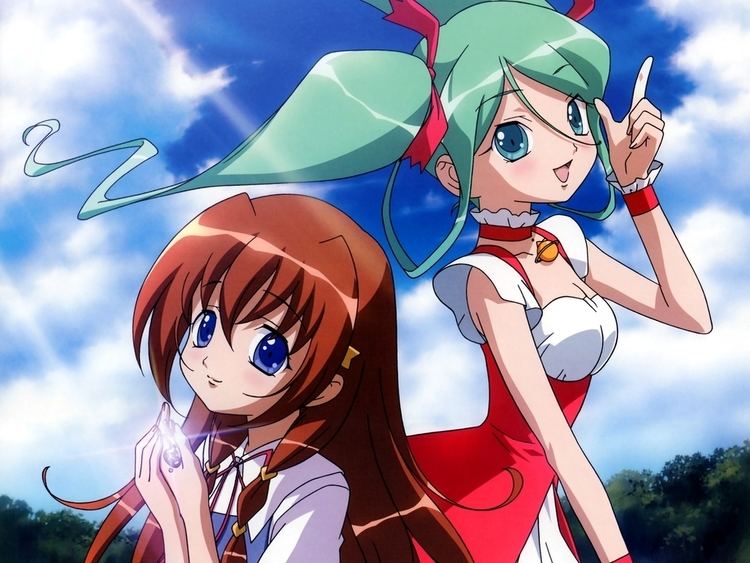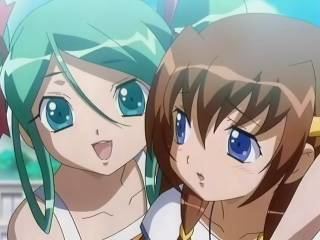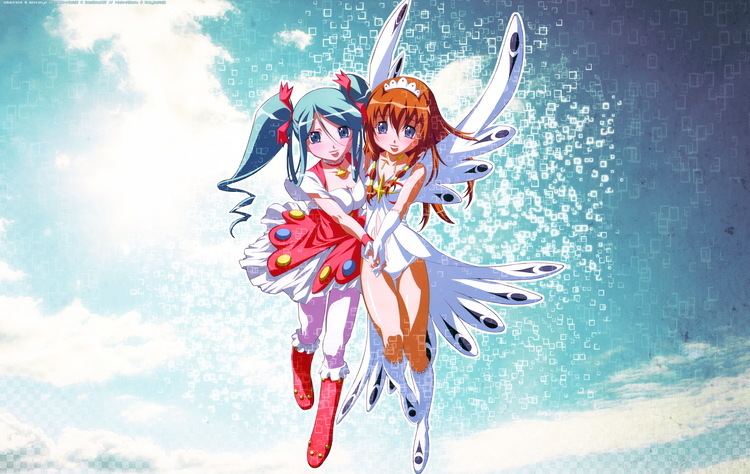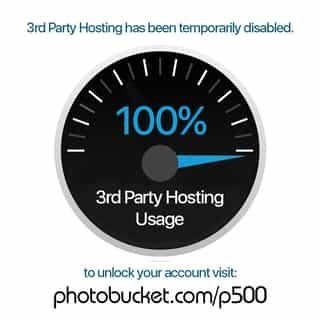6.8 /10 1 Votes
6.7/10 IMDb Episodes 12 | 6.9/10 MyAnimeList Original network TV Kanagawa First episode date October 2004 | |||||||||||||||||||||||||||||||||
 | ||||||||||||||||||||||||||||||||||
Original run October 3, 2004 – December 18, 2004 Cast Similar Kiddy Grade, The Big O, Please Teacher!, Prétear, Excel Saga | ||||||||||||||||||||||||||||||||||
Uta kata opening omoi wo kanadete savage genius
Uta∽Kata (うた∽かた (詩片), lit. "Poem Fragment") is a 2004 anime TV series. Written differently (泡沫), the title can refer to bubbles and used as such in the ending theme.
Contents
- Uta kata opening omoi wo kanadete savage genius
- Plot
- OVA
- Characters
- Episode list
- Staff credits
- Theme songs
- Reaction
- References

The series can be loosely considered a magical girl story. However, this series deviates from more conventional magical girl themes in that it addresses topics that are for a more mature audience, such as child abuse, eating disorders, and possibly misanthropy. Nevertheless, it illustrates the main character's coming of age with each episode, becoming more and more emotionally intense as the story goes on.

The story follows Ichika Tachibana's life over a summer holiday when she meets Manatsu Kuroki. The series details their summer activities and the use of special creatures called Djinn (ジン jin) that lend their powers to Ichika to help her and her friends when they invariably find themselves in danger and eventually for their own motives.

Plot

On the day before the summer holiday, Ichika Tachibana discovers that the charm attached to her cell phone has somehow wound up inside a mirror in the old school building. A girl named Manatsu Kuroki, inside the mirror, offers to return the charm and phone in exchange for a favor. When Ichika accepts, Manatsu emerges from the mirror, but Ichika finds to her chagrin that the charm's stones' have taken on different colors. Her indignation soon turns to delight as she is transformed by the charm and given an incredibly moving experience in the skies above Kamakura.
After returning to the old classroom, Manatsu asks that Ichika use all the colored stones in the charm and record her experiences and thoughts. Starting with the facade of Manatsu as her text-message pal, Ichika begins to entangle herself in a web of small lies and deceptions.
When Ichika faces dangers during the summer holiday, she at first uses the Djinn's power in the stones to resolve them supernaturally. But as the summer draws on, she begins to use the power even though there is no imminent danger. Through each experience with the Djinn she learns about her willfulness and that of others. Slowly, the power of the Djinn erodes her emotional, physical, and mental strength, and she abuses the power to the point of attempting murder.
Meanwhile, Ichika's tutors, Sei and Kai, are tormented by Ichika's ordeal — Sei went through the very same thing six years ago. They very much want to prevent Ichika from experiencing the same trials but are bound to the rules of the ritual. When Sei tried to interfere, he was turned into stone as a penalty. Although Ichika tries to abandon using the Djinn's power altogether, she finds herself losing control over her actions. Faced with fear, sadness, or anger, she finds that the Djinn grant her power against her will. Not only this, she finds that she cannot discard the charm, as it will fly back to her.
Ichika had been subjected to a ritual judgment determined from the time she was conceived. Saya, the final Djinn, would take a person of fourteen years — the age between the innocence of childhood and the hardness of adulthood — and show him or her the world through the eyes of the Djinn. The individual would experience seven trials that contrasted seven virtues and sins: affection and resentment, temperance and hubris, devotion and rebellion, honesty and treachery, reason and envy, passion and lust, wisdom and machination. When Ichika is thus led to despair in humanity and disgust of herself, Saya binds her to the mirror and asks her to decide whether to destroy humanity or herself.
In response, Ichika refuses to choose either. Saya declares that as a violation of the rules and drives her scythe toward Ichika's body. Sei shatters his stone skin and tries to stop the scythe, but Ichika decides that it is better that she die rather than see him hurt. Manatsu, in defiance, drives herself into the scythe, saving Ichika's life. Kai returns the life energy that kept him in human form to Sei, and he and Manatsu revert to their original forms: shards of the old mirror.
When school resumed in the fall, Ichika decided to remain at Kamakura rather than join her parents in Italy. Elsewhere, Saya determined to move on and judge the next teenager.
OVA
In the OVA Shotō no Futanatsu (初冬の双夏, Twin Summers of the First Winter), Ichika hears that Manatsu has been seen again, one week before her birthday. Not long after the fall term had begun, Sei had transferred to a German university in an exchange program. On Christmas Eve, both discover that Manatsu and Kai's shards had vanished, and they reunite with Ichika and Sei, respectively. They had returned for one last night and to say goodbye. After an evening with Ichika and Sei, the shards return to Saya's old mirror during the night. The next spring, Ichika enters a new school year with her friends, while Saya's experiments continue with a new test subject.
Characters
Episode list
Similar to gímik's earlier work, Kiddy Grade (where a different guest artist drew the eyecatches for each episode), each episode's main costume was designed by a guest artist who also created artwork for the ending sequence of that episode.
Each episode preview in the anime was narrated by Ichika in the style of a diary entry. On the website, a corresponding entry narrated by Manatsu is available.
In a possible variation of the four-character yojijukugo, every title is composed of a pair of two-kanji words separated by a no particle. A literal, if rough, translation of most titles can be derived by assembling the phrase "[second word] of (the) [first word]".
The TV series and OVA has been licensed in North America by Sentai Filmworks; anime distributor Section23 Films released the complete collection set on November 2, 2010.
Staff credits
Theme songs
Reaction
The Anime Encyclopedia: A Guide to Japanese Animation Since 1917 compares the series' underlying themes to those of Mahoromatic, noting that the story is "an allegory of the end of childhood and one last vacation before the responsibilities of the grown-up world start to impinge". It criticizes the OVA episode, calling it "a rather pointless rehash that to some minds betrays the elegiac quality of the original series—if everything can be reset and reprised à la Tenchi Muyo!, where's the drama?"
